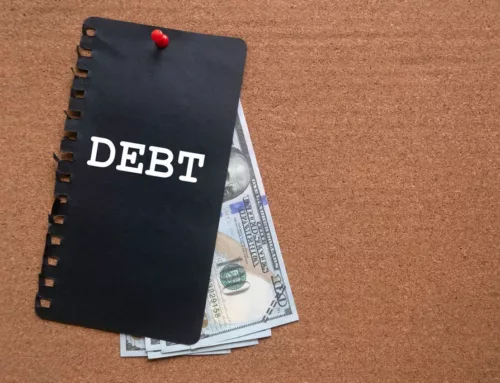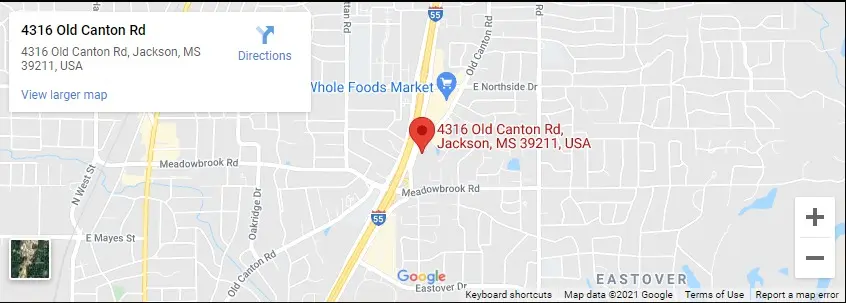If your debt is too big that you’re having a hard time repaying it, or if any of your assets are at risk of repossession, then filing for bankruptcy debt relief might be for you.
There are many types of bankruptcy in the US bankruptcy code, each with its bankruptcy chapter. From among the different bankruptcy chapters, the most common types for personal bankruptcy are Chapter 7 and 13. Chapter 7 bankruptcies are also called liquidation bankruptcy where one’s assets are liquidated to pay for as much of the debt as possible while Chapter 13 is simply a restructuring of a person’s debts.
To get more information on personal bankruptcy laws and declaring bankruptcy, don’t hesitate to contact a bankruptcy attorney at the Rollins Law Firm, a Jackson, Mississippi bankruptcy law firm.
1. Analyze Debts
When filing bankruptcy, it is important to first analyze your debts because not all debts are treated the same in bankruptcy. So, the first step is to check your debts and identify what type of debts they are.
Unsecured Debt
These are debts that are not secured by collateral such as credit card debt and medical debt. Most types of unsecured debt are dischargeable under a Chapter 7 bankruptcy.
Secured and Priority Debts
On the other hand, secured debts are those protected by collateral, such as in mortgages and car loans. Priority debts are debts that usually carry the worst consequences if unpaid, including alimony, child support, and tax debts. These two types of debts cannot be discharged.
2. Identify Exemptions
 Filing a Chapter 7 bankruptcy involves the liquidation of your assets to pay for as much of the debt as possible. Fortunately, this does not mean that all your property will be seized- only your non-exempt assets will be liquidated for the settling of your debts.
Filing a Chapter 7 bankruptcy involves the liquidation of your assets to pay for as much of the debt as possible. Fortunately, this does not mean that all your property will be seized- only your non-exempt assets will be liquidated for the settling of your debts.
Exempt assets are the items that you will need to keep on making a living that includes your house, a modest car, and your clothes. Non-exempt assets are those considered to be non-essential for daily living including extra properties, expensive cars, and valuable collections.
3. Confirm Eligibility
Not everyone is eligible to file a Chapter 7- you must first pass the means test calculation to be eligible. However, there are some exceptions.
Business owners who acquired most of their debt from running the business, army veterans who accumulated most of their debt while in active duty, and persons whose total household income is below the state median’s are all automatically qualified to file a Chapter 7. Everyone else will have to proceed with the means test calculation.
The means test calculation tries to assess if you have enough resources to file a Chapter 13 instead of Chapter 7. It takes your household’s total income for the last six months, deducts the allowance set for necessary expenses, and computes to see if the remaining amount is enough to pay for 25% of your total debt. If it is, you will have to file a Chapter 13, if not, you may proceed to file a Chapter 7.
Eligibility for bankruptcy differs from state to state, that is why it is important to consult a bankruptcy lawyer who is in your area. Talk to one of our Jackson, MS bankruptcy lawyers to help you figure out the bankruptcy process in your state.
4. Surrender, Redeem, or Reaffirm Secured Debts
At this stage, you will have to deal with your secured debt. As mentioned a while ago, secured debts are not dischargeable because if you don’t pay for them, your creditors can take back the collateral associated with your debt.
You will have three options on how you will deal with your secured debts: surrender, redeem, or reaffirm – surrender the collateral linked to the debt, redeem the collateral by paying for the remaining debt with a lump sum, or reaffirm your debt and recommit to paying the debt as originally planned.
5. Fill Out Bankruptcy Forms
It is then time to fill out your bankruptcy forms. The forms necessary to file bankruptcy vary by state, so you should get in touch with your local bankruptcy court to get the forms and ask about the requirements.
Alternatively, get in touch with our Jackson, MS bankruptcy attorneys to know more about the necessary forms in Mississippi and to let us help you file them.
Bankruptcy forms will typically ask you about your finances, including expenses, debts, and past transactions. You will also have to get into detail about your current debts.
6. Take Credit Counseling Courses
All types of bankruptcies will require filers to attend credit counseling courses. These are classes approved by the U.S. Trustee’s Office and will teach you about the bankruptcy process and the requirements. You will have to take these classes 6 months before filing for which you will receive a certificate that you need to submit along with your bankruptcy forms.
7. File Forms and Pay for the Filing Fee
After taking credit counseling courses, you will be ready to submit your forms. Ideally, you should submit all your requirements together, but if you really cannot, you may submit some forms ahead of the others, given that you will submit the other requirements within 14 days.
You will also have to pay the filing fee. If this is something that you cannot afford, you can ask the court to divide it into four installments that you can pay overtime or you can have it entirely waived.
Once you have filed your bankruptcy forms, your bankruptcy case officially starts. As soon as this happens, an automatic stay will take into effect, as dictated in the federal bankruptcy code. An automatic stay is a bankruptcy protection policy that protects you from your lenders. This means that they will no longer be allowed to contact you to collect payments.
8. Submit Documents to Bankruptcy Trustee
The bankruptcy court will also assign a bankruptcy trustee who will be responsible for validating your bankruptcy forms. He will confirm the information you put down in your forms using additional documents like tax returns, paycheck stubs, and bank statements.
9. Attend Creditors’ Meeting
You will have to meet with your creditors and bankruptcy trustee to discuss your debt because it is in this meeting where you will finalize how you will deal with your debt. It is also in this meeting where your bankruptcy trustee will sort your assets as exempt and non-exempt before liquidating your non-exempt assets and using them as payment.
If there are any objections to your plan by you or your creditors, they must be raised here before your bankruptcy case is closed. Fortunately, most creditors don’t usually attend these meetings.
10. Settle Secured Debts
Once your bankruptcy plan has been settled, you will then have to start working on your secured debt by paying for the debts that you decide to keep and surrendering the collateral for the debts that you decide to let go.
11. Take a Debtor Education Course
The last step before officially being discharged from debt is taking a debtor education course. This is similar to the credit counseling that you will have taken before filing bankruptcy. You will learn how to better handle your finances and rebuild your credit.
12. Discharge
Congratulations! At this point, you will have completed all the requirements necessary to file a Chapter 7. This means that, at this point, all your dischargeable debt will be gone, and you will no longer have to pay for them, nor will your past creditors have the right to keep on making collections.
If you have any more questions on how to declare bankruptcy, bankruptcy rules, and debt settlement, don’t hesitate to contact one of our attorneys at The Rollins Law Firm. Let us help you through the bankruptcy filing process to get you that fresh start.








Connect with Us